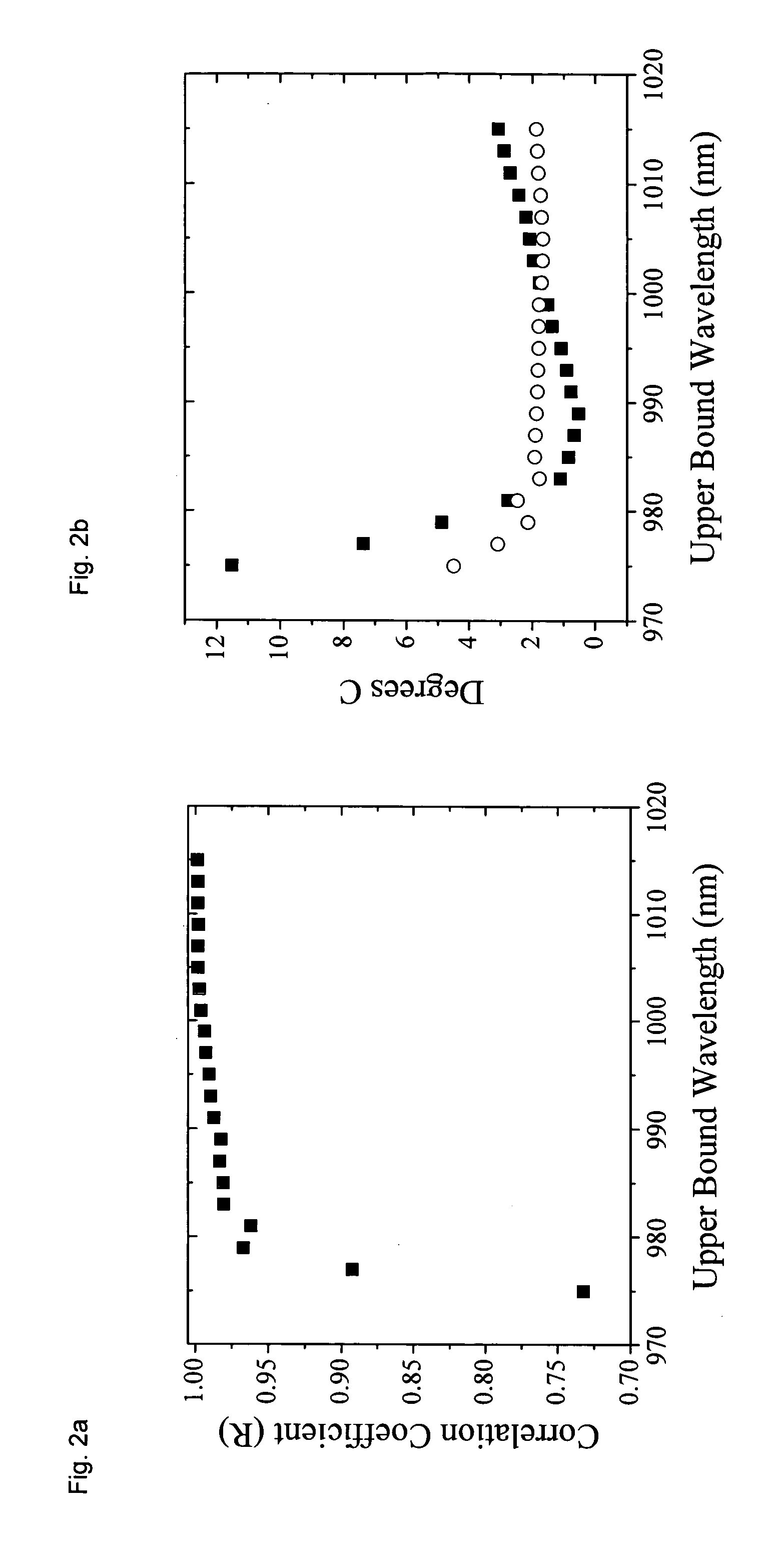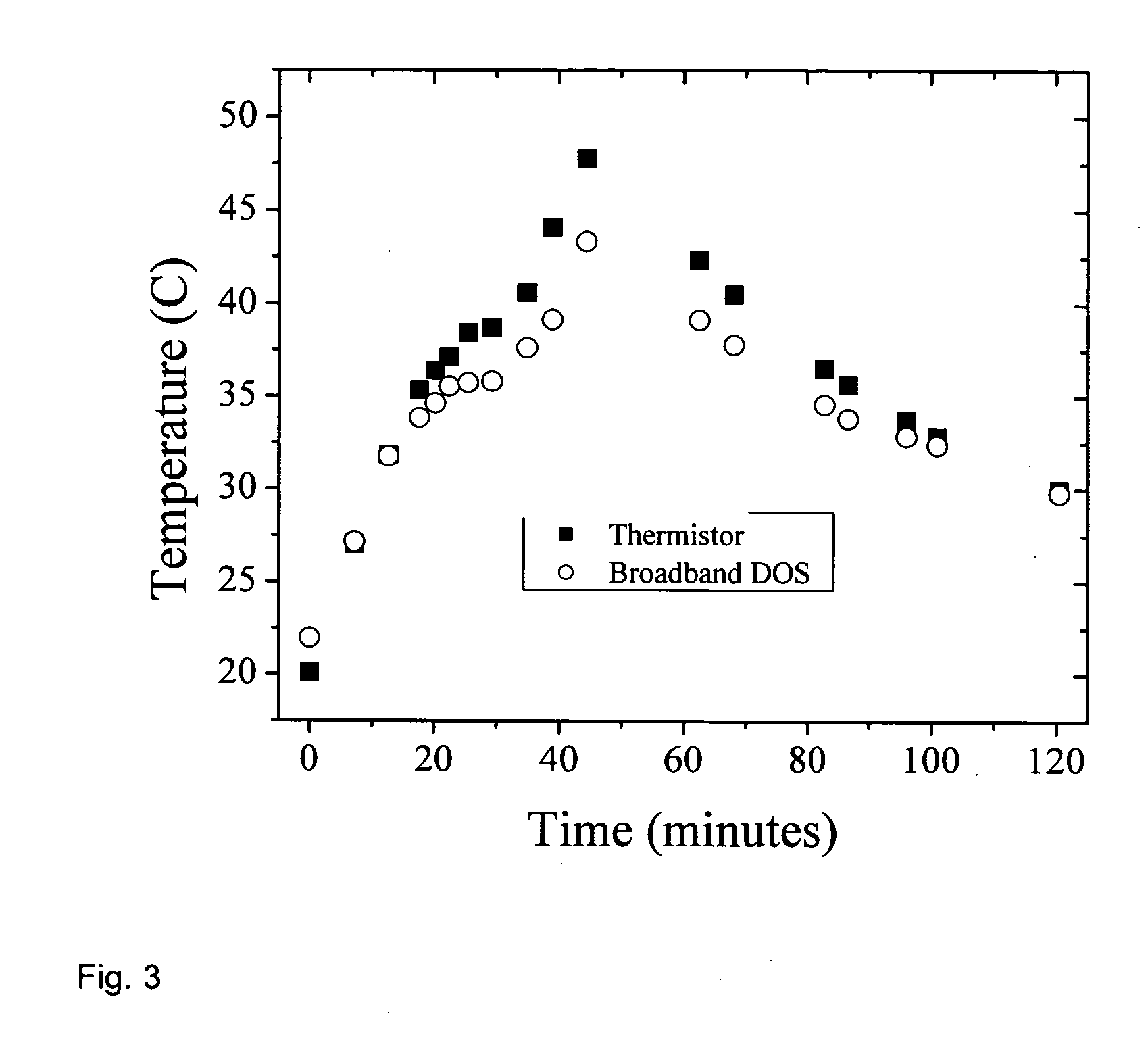Apparatus and method for monitoring deep tissue temperature using broadband diffuse optical spectroscopy
a technology of diffuse optical spectroscopy and deep tissue, applied in the field of optical measurement of tissue parameters using diffuse optical spectroscopy, can solve the problems of increasing thermal heterogeneity, affecting the clinical outcome, so as to improve the chromophore fit and increase the intensity
- Summary
- Abstract
- Description
- Claims
- Application Information
AI Technical Summary
Benefits of technology
Problems solved by technology
Method used
Image
Examples
Embodiment Construction
Materials and Methods
[0051] a. Broadband DOS
[0052] Broadband DOS is a technique that combines frequency domain (FD) measurements with a broadband steady-state (SS) measurement and determines the absolute absorption and scattering of the tissue within the near-infrared (600-1050 nm). From the measured tissue absorption the absolute tissue chromophores can be determined. Broadband DOS using combined frequency domain (FD) measurements with a broadband steady-state (SS) measurement has recently been developed by researchers at the Beckman Laser Institute at the University of California at Irvine, and has been published in Bevilacqua et.al., Applied Optics, Vol 39, No. 34, pp 6498-6507 (December 2000). See also Tromberg et al, “Broadband Absorption Spectroscopy In Turbid Media By Combined Frequency-Domain And Steady State Methodologies” U.S. Patent Application 20030023172 (Jan. 30, 2003) incorporated herein by reference.
[0053] As described in the published literature most of the wave...
PUM
 Login to View More
Login to View More Abstract
Description
Claims
Application Information
 Login to View More
Login to View More - R&D
- Intellectual Property
- Life Sciences
- Materials
- Tech Scout
- Unparalleled Data Quality
- Higher Quality Content
- 60% Fewer Hallucinations
Browse by: Latest US Patents, China's latest patents, Technical Efficacy Thesaurus, Application Domain, Technology Topic, Popular Technical Reports.
© 2025 PatSnap. All rights reserved.Legal|Privacy policy|Modern Slavery Act Transparency Statement|Sitemap|About US| Contact US: help@patsnap.com



